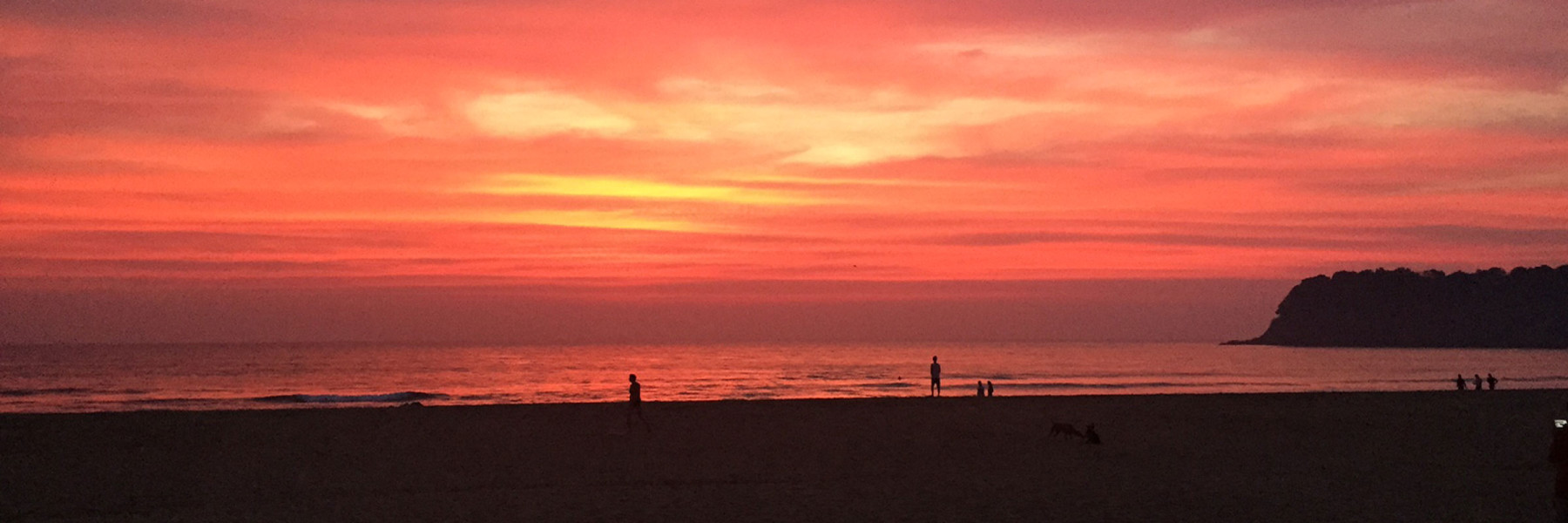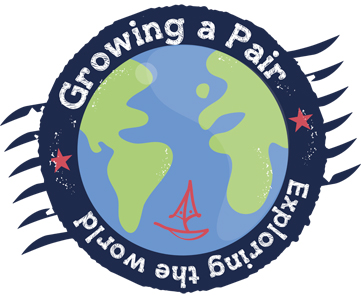
Relaxing on Agonda beach, Goa, India

After a thirty-seven hour train journey from Agra, which included two nights and one full day in an Indian 3AC sleeper carriage, I was expecting to be quite relieved to see the sea. The journey had been so much better than I had feared. Indian trains have changed a lot since we last travelled on one thirteen years ago. I didn’t see a single cockroach, the carriages were quite close to being clean, and they served edible and surprisingly tasty food. The boys loved being on the train. They could hang out of the open doors while travelling at speed. They could spend hours reading in the top bunks. They could climb around the beds like monkeys shooting each other with pretend guns. We met some lovely local people and the time flew by. But seeing the sea as we trudged through the hot sand towards our beach hut was something else. It was 8am and we hadn’t washed for some time. We dropped our bags next to a table in the Monsoon Restaurant and sunk into chairs in the morning heat, staring out at the golden sand and white waves and cows. Amazing. Gobsmacked.
Agonda Beach is quiet, beautiful, and clean. Numerous beach huts and small restaurants line the beach, fringed by palm trees. Turtles sometimes lay their eggs here and this has so far protected the beach from over-development. Noise is limited, and sun beds and parasol are banned from the beach. Cows, horses and stray dogs wander along the beach. This just adds to the uniqueness of the beach. We have avoided the street dogs everywhere else but here we got to know them. There was the flea-ridden one with the collar who constantly tried to sit on my beach towel, the two insane ones who spent hours trying to dig up beach crabs but didn’t know what to do when they caught one, and the one named “No Name” at White Sands restaurant who scared off all the other dogs and barked at the waiters. Despite the wildlife, the beach is spotlessly clean due to the army of ladies in their sun hats and fluorescent jackets who wander along the beach with a wicker basket and a brush. The street behind the beach is a single road full of souvenir stalls, clothes stalls and cafes. There is a huge tree at the end of the lane where the local fruit bats roost and then rise up every day before dusk. Hundreds of bats with a metre wingspan swooping around the skies is an amazing sight.
The waves were huge for the first week. We hired bodyboards and surfed for hours. We walked along the beach most mornings to swim in the river and watch the fishermen throw fish to the swooping Sea Eagles. We built sandcastles. We hired mopeds and explored the local area. Cola Beach, Palolem Beach, Cabo da Rama fort. We met a fantastic family (Canadian and Kiwi, but living in Bangalore) with their nine year old, Henry, who was an absolute gem. The boys can now say ”You cheeky little bugger!” in an Indian accent and charm fishermen into giving them some of the day’s catch. Life skills. The grownups drank too much beer (I blame Sarah and Jeff, Henry’s parents) and spent too much money, but it was worth every penny. We met fantastic Rosemary, from New Zealand but living in Dehli , who taught the boys to say “Surprise! I’ve got diarrhoea!” and “I fart in your general direction” in German. More life skills. We hired a boat to watch dolphins. We went on a fishing trip and caught nothing. We cruised down the backwaters in a tiny stick-propelled boat, watching the cormorants fish and the kites swoop overhead. We ate dal fry and chana masala and butter naan and fish kadai. We swam in the sea every day. We collected starfish and hermit crabs and odd-looking crustaceans. We watched the sunsets and the fishermen and the tunnelling crabs and the wandering cows.
We had booked four nights in a beach hut. We stayed for sixteen. The first place we stayed was Kura Kura Beach Huts. It was OK. Very basic chipboard huts with a fan, a double bed just about big enough for three of us and an extra bed on the floor. A balcony with four chairs and a view of the sea if you looked around the corner. Quite dark and dingy, a bit smelly, no hot water. Perfectly acceptable for a few nights on our budget. Then we moved to Secret Garden, and two double beds, one outside on the patio, and a fridge. Hot shower. Proper view of the sea. Mostly working wifi. Resident cockroach in the bathroom. More money than we can afford at £25 a night, but the fridge meant that we could do our own breakfast and lunch. The boys prefer bread and Nutella for breakfast anyway. And we had somewhere to sit, to update websites, sort out photos, practise times tables, write Smug Monday posts, and watch sunsets while drinking a sneaky beer. There is a whole variety of accommodation available in Agonda, from cheap backpacker rooms to very expensive luxury apartments on the beach. Henry and his family were paying just £45 for a beach hut in a nice resort which was a whole world of loveliness away from our rough old £18 Kura Kura shed.
We would recommend Agonda beach if you like quiet, peaceful beaches with no nightlife, no noise, no hassle. Palolem Beach was lovely but busier with jet skis and kayaks and lots of boat trips and loud bars. Lovely beach but we loved quiet, relaxing Agonda. Looking back, I can remember leaving Ko Samui in Thailand, back in 2003, because everything closed at 10pm. How things change! Now, with kids, this isn’t for us. We visited Cola Beach by moped. It isn’t as quiet and secluded as our three year old guide book led us to believe, with quite a few beach huts and a few restaurants on the beach, but compared to Palolem, it’s deserted. This is probably helped by the very rough and steep dirt track that leads to it. Not for the faint-hearted on mopeds but well worth it.
Off to Cochin on the train next and back to travelling. Quite excited. Love Agonda though.































